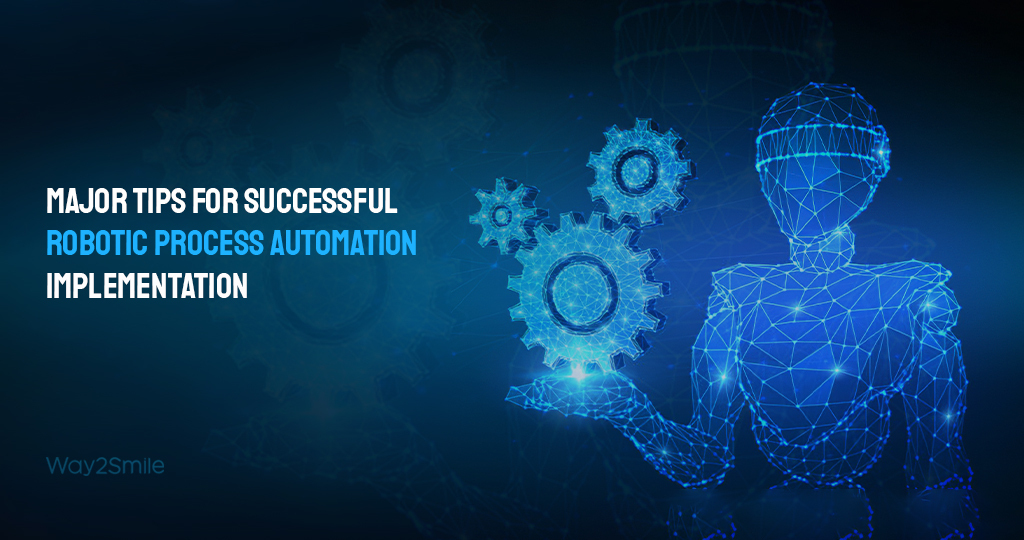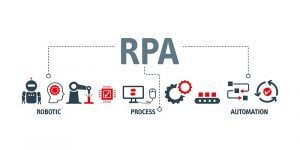
Major Tips for Successful Robotic Process Automation Implementation
If you are searching for RPA on the internet, then you probably know what it stands for; Robotic Process Automation. There are a lot of myths and facts clouding around this topic since this is one of the things that could make or break your business. It can make your business significantly smoother and easier if done correctly; otherwise, it could make a big mess and possibly an unnecessary hole in your pocket. Don’t feel intimidated by RPA as we have got some of the greatest tips to make RPA a winning strike for your business!
For those who stumbled upon this topic through the magic of the internet, Robotic Process Automation is pretty much self-explanatory. It is nothing but the incorporation of a system that takes care of specific processes in the system by using a digital workforce or BOTS. Bots are used to perform certain functions in a system without the help of a human. This narrows down the resources that you deploy in your business and helps you to allocate the energy where it is most needed without slacking in the accuracy and the rate of work done. In fact, RPA can drastically improve the accuracy and the amount of work done if it is implemented correctly.
Benefits of RPA or Robotic Process Automation
These are some of the benefits of RPA right out of the bat,
- Higher efficiency
- Increased accuracy
- Greater ROI
- Versatility
- Customer-centric
- Optimization of the resources
Tips for a successful RPA or Robotic Process Automation
Part of something bigger

Robotic Process Automation is not that big bad thing that you conquer and the fort becomes yours. Rather, it’s a part of something bigger. RPA is probably the missing piece of digital transformation. One of the goals of digital transformation is to create a self-sustaining system that has 100% accuracy but is also customer-centric. Implementing Robotic Process Automation is simply not just a trend that people can subscribe to. It is more related to the business model and the business’s response towards digitalization. If there are no IT goals for your business, then RPA probably doesn’t have a place in your business. Being said that, implementing the right type of RPA at the right place can exponentially improve your business and widens the scope. If you are in the manufacturing industry and you are planning to implement RPA, then you should first have space where you could let RPA roam around! If not, it is a mere waste of resources and poor efficiency. So take it one step at a time. Have an IT goal in your mind for a business. Use Robotic Process Automation as a catalyst to line up your goals.
Read Also – RPA in Manufacturing- The Future of Manufacturing Automation Explained
Don’t jump right off the cliff

As tempting as it could be to implement an automation process that can fire up your business process, you should remember to take it slow but steady. Try to implement the automation processes in the easier part of your system. Once you get used to the easy part, you can try to implement it in the key areas of your business. RPA can make significant changes in your business process when you let it do monotonous and repetitive tasks that can drain the energy of a human while also accounting for the chance of human error to occur. Robotic Process Automation uses bots to complete a task. Bots are designed to mimic and reflect what humans are doing and they can do it pretty well too. The problem occurs when the bot comes across an anomaly in the process. So problem-solving is for humans and repetitive tasks are for bots. Make the division of labor clear!
Do tons of testing

Before adopting an RPA model, make sure to test the model extensively. You have to run a million different scenarios before you let the magic work in real-time. This is because of the simple fact that bots are created to perform certain human actions for long periods. For example, imagine that you have to search for the word “earth” in a document that contains a million words. This is one exhaustive task if a human has to perform this task. Even if a human is ready to perform this task, you have to consider the chance for error that can occur due to the nature of the human itself. So you are planning to adopt an RPA model to do the job. You are using RPA to look for the word “earth” in the million word document. So what RPA does basically is scan through the document and find the exact word that you are feeding to it. so if there is a word “EARTH” somewhere in that document, the bot omits it since “earth” and “EARTH” are not the same for the machine. If only you had the time to read this blog and remembered to test the RPA model exhaustively!!! RPA consulting companies can make this exhaustive process a cakewalk for you.
Read Also – How organizations become more profitable by investing in Trending RPA & AI for Businesses?
Draw a box

Before you adopt an RPA model, you draw a box. You draw a box and add things inside the box. The things inside the box should be the things that the RPA model can do. There you go; you set reasonable and practical expectations from Robotic Process Automation. Believe it or not, this step can make a huge difference. It is really important to stop a second before making the big decision and find an answer to this question “what are your expectations from RPA?”. You have to set realistic and achievable goals in order to make sure that you stay in the realm of your business. If you are adopting an RPA model to focus the work on the documentation process, then you have to understand the impact that this model can bring to your business. Only then you can reallocate the pieces inside your operation to better optimize your business. Optimism can only throw the ball so far, facts-driven decision-making is the way to go!
Read Also – Leverage RPA and AI to transform your business
Finishing up,
Robotic Process Automation can look like a chore instead of an upgrade if not done properly. In fact, the cost that can be saved by implementing a solid RPA model can make significant differences in ways one can’t imagine. Incorporating a new piece of technology has one simple goal- to make the process easier. It doesn’t matter if RPA doubles your work instead of making it easier. Don’t be reluctant to ask a million questions. Understand the different aspects of this system and find spaces where you can add it to your space. This is no greater way to show the customers and the world that you care about your business like adapting to the newer waves.
